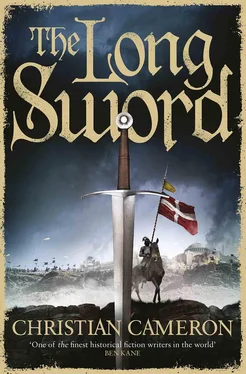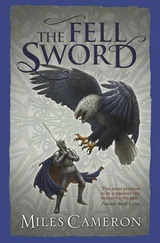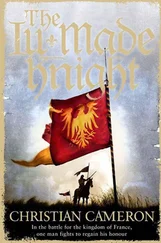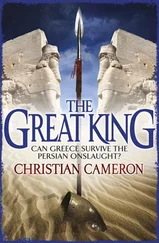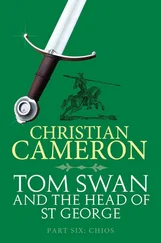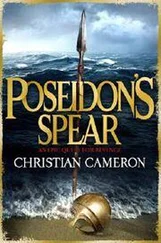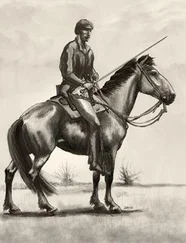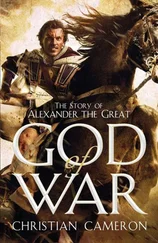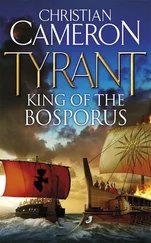Christian Cameron - The Long Sword
Здесь есть возможность читать онлайн «Christian Cameron - The Long Sword» весь текст электронной книги совершенно бесплатно (целиком полную версию без сокращений). В некоторых случаях можно слушать аудио, скачать через торрент в формате fb2 и присутствует краткое содержание. Год выпуска: 2014, Издательство: Orion Publishing Group, Жанр: Исторические приключения, на английском языке. Описание произведения, (предисловие) а так же отзывы посетителей доступны на портале библиотеки ЛибКат.
- Название:The Long Sword
- Автор:
- Издательство:Orion Publishing Group
- Жанр:
- Год:2014
- ISBN:нет данных
- Рейтинг книги:4 / 5. Голосов: 1
-
Избранное:Добавить в избранное
- Отзывы:
-
Ваша оценка:
- 80
- 1
- 2
- 3
- 4
- 5
The Long Sword: краткое содержание, описание и аннотация
Предлагаем к чтению аннотацию, описание, краткое содержание или предисловие (зависит от того, что написал сам автор книги «The Long Sword»). Если вы не нашли необходимую информацию о книге — напишите в комментариях, мы постараемся отыскать её.
The Long Sword — читать онлайн бесплатно полную книгу (весь текст) целиком
Ниже представлен текст книги, разбитый по страницам. Система сохранения места последней прочитанной страницы, позволяет с удобством читать онлайн бесплатно книгу «The Long Sword», без необходимости каждый раз заново искать на чём Вы остановились. Поставьте закладку, и сможете в любой момент перейти на страницу, на которой закончили чтение.
Интервал:
Закладка:
Christian Cameron
The Long Sword
GLOSSARY
Arming sword— A single-handed sword, thirty inches or so long, with a simple cross guard and a heavy pommel, usually double edged and pointed.
Arming Coat— A doublet either stuffed, padded, or cut from multiple layers of linen or canvas to be worn under armour.
Alderman —One of the officers or magistrates of a town or commune.
Bailli— A French royal officer much like an English sheriff; or the commander of a ‘ langue ’ in the Knights of Saint John.
Basilard— A dagger with a hilt like a capital I, with a broad cross both under and over the hand. Possibly the predecessor of the rondel dagger, it was a sort of symbol of chivalric status in the late fourteenth century. Some of them look so much like Etruscan weapons of the bronze and early iron age that I wonder about influences. .
Bassinet— A form of helmet that evolved during the late middle ages, the bassinet was a helmet that came down to the nape of the neck everywhere but over the face, which was left unprotected. It was almost always worn with an aventail made of maille which fell from the helmet like a short cloak over the shoulders. By 1350, the bassinet had begun to develop a moveable visor, although it was some time before the technology was perfected and made able to lock.
Brigans— A period term for foot soldiers that has made it into our lexicon as a form of bandit — brigands.
Burgher— A member of the town council, or sometimes, just a prosperous townsman.
Commune— In the period, powerful towns and cities were called communes and had the power of a great feudal lord — over their own people, and over trade.
Coat-of-plates— In period, the plate armour breast and back plate were just beginning to appear on European battlefields by the time of Poitiers — mostly due to advances in metallurgy which allowed larger chunks of steel to be produced in furnaces. Because large pieces of steel were comparatively rare at the beginning of William Gold’s career, most soldiers wore a coat of small plates — varying from a breastplate made of six or seven carefully formed plates, to a jacket made up of hundeds of very small plates riveted to a leather or linen canvas backing. The protection offered was superb, but the garment is heavy and the junctions of the plates were not resistant to a strong thrust, which had a major impact on the sword styles of the day.
Cote— In the novel, I use the period term cote to describe what might then have been called a gown — a man’s over-garment worn atop shirt and doublet or pourpoint or jupon, sometimes furred, fitting tightly across the shoulders and then dropping away like a large bell. They could go all the way to the floor with buttons all the way, or only to the middle of the thigh. They were sometimes worn with fur, and were warm and practical.
Demesne— The central holdings of a lord — his actual lands, as opposed to lands to which he may have political rights but not taxation rights or where he does not control the peasantry.
Donjon— The word from which we get dungeon.
Doublet— A small garment worn over the shirt, very much like a modern vest, that held up the hose and sometimes to which armour was attached. Almost every man would have one. Name comes from the requirement of the Paris Tailor’s guild that the doublet be made — at the very least — of a piece of linen doubled — thus, heavy enough to hold the grommets and thus to hold the strain of the laced-on hose.
Gauntlets— Covering for the hands was essential for combat. Men wore maille or scale gauntlets or even very heavy leather gloves, but by William Gold’s time, the richest men wore articulated steel gauntlets with fingers.
Gown— An over garment worn in Northern Europe (at least) over the kirtle, it might have dagged or magnificently pointed sleeves and a very high collar and could be worn belted, or open to daringly reveal the kirtle, or simply, to be warm. Sometimes lined in fur, often made of wool.
Haubergeon— Derived from hauberk , the haubergeon is a small, comparatively light maille shirt. It does not go down past the thighs, nor does it usually have long sleeves, and may sometimes have had leather reinforcement at the hems.
Helm or haum —The great helm had become smaller and slimmer since the thirteenth century, but continued to be very popular, especially in Italy, where a full helm that covered the face and head was part of most harnesses until the armet took over in the early fifteenth century. Edward III and the Black Prince both seem to have worn helms. Late in the period, helms began to have moveable visors like bassinets .
Hobilar— A non-knightly man-at-arms in England.
Horses— Horses were a mainstay of medieval society, and they were expensive, even the worst of them. A good horse cost many days’ wages for a poor man; a warhorse cost almost a year’s income for a knight, and the loss of a warhorse was so serious that most mercenary companies specified in their contracts (or condottas ) that the employer would replace the horse. A second level of horse was the lady’s palfrey — often smaller and finer, but the medieval warhorse was not a giant farm horse, but a solid beast like a modern Hanoverian. Also, ronceys which are generally inferior smaller horses ridden by archers.
Hours— The medieval day was divided — at least in most parts of Europe — by the canonical periods observed in churches and religious houses. The day started with Matins very early, past nonnes in the middle of the day, and came around to vespers towards evening. This is a vast simplification, but I have tried to keep to the flavor of medieval time by avoiding minutes and seconds.
Jupon— A close fitting garment, in this period often laced, and sometimes used to support other garments. As far as I can tell, the term is almost interchangeable with doublet and with pourpoint. As fashion moved from loose garments based on simply cut squares and rectangles to the skin tight fitted clothes of the mid-to-late 14th century, it became necessary for men to lace their hose (stockings) to their upper garment — to hold them up! The simplest doublet (the term comes from the guild requirement that they be made of two thicknesses of linen or more, this ‘doubled’) was a skin-tight vest worn over a shirt, with lacing holes for ‘points’ that tied up the hose. The pourpoint (literally, For Points) started as the same garment. The pourpoint became quite elaborate, as you can see by looking at the original that belonged to Charles of Blois online. A jupon could also be worn as a padded garment to support armour (still with lacing holes, to which armour attach) or even over armour, as a tight fitting garment over the breastplate or coat of plates, sometimes bearing the owner’s arms.
Kirtle— A women’s equivalent of the doublet or pourpoint. In Italy, young women might wear one daringly as an outer garment. It is skin tight from neck to hips, and then falls into a skirt. Fancy ones were buttoned or laced from the navel. Moralists decried them.
Langue— One of the sub-organizations of the Order of the Knights of Saint John, commonly called the Hospitallers. The ‘langues’ did not always make sense, as they crossed the growing national bounds of Europe, so that, for example, Scots knights were in the English Langue, Catalans in the Spanish Langue. But it allowed men to eat and drink with others who spoke the same tongue, or nearer to it. To the best of my understanding, however, every man, however lowly, and every serving man and woman, had to know Latin, which seems to have been the order’s lingua franca. That’s more a guess than something I know.
Читать дальшеИнтервал:
Закладка:
Похожие книги на «The Long Sword»
Представляем Вашему вниманию похожие книги на «The Long Sword» списком для выбора. Мы отобрали схожую по названию и смыслу литературу в надежде предоставить читателям больше вариантов отыскать новые, интересные, ещё непрочитанные произведения.
Обсуждение, отзывы о книге «The Long Sword» и просто собственные мнения читателей. Оставьте ваши комментарии, напишите, что Вы думаете о произведении, его смысле или главных героях. Укажите что конкретно понравилось, а что нет, и почему Вы так считаете.
